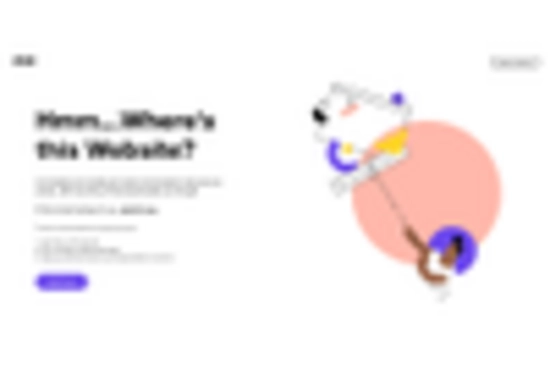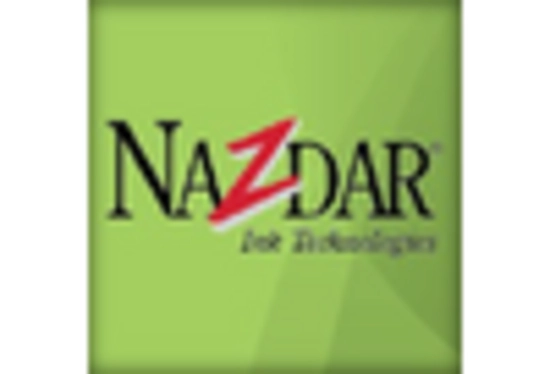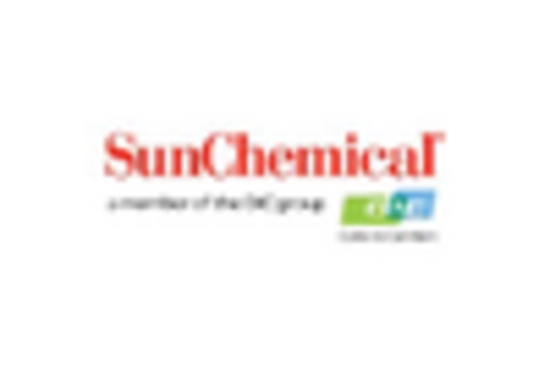The Liquid Waterborne Printing Ink Market is currently characterized by a dynamic competitive landscape, driven by increasing demand for sustainable printing solutions and stringent environmental regulations. Key players such as Sun Chemical (US), Flint Group (DE), and Toyo Ink SC Holdings Co., Ltd. (JP) are strategically positioning themselves through innovation and regional expansion. Sun Chemical (US) has focused on enhancing its product portfolio with eco-friendly inks, while Flint Group (DE) emphasizes digital transformation to streamline operations. Toyo Ink SC Holdings Co., Ltd. (JP) is actively pursuing partnerships to bolster its market presence, collectively shaping a competitive environment that prioritizes sustainability and technological advancement.
In terms of business tactics, companies are increasingly localizing manufacturing to reduce lead times and optimize supply chains. The market appears moderately fragmented, with several players vying for market share. However, the collective influence of major companies is significant, as they leverage their resources to enhance operational efficiencies and meet evolving customer demands.
In August 2025, Sun Chemical (US) announced the launch of a new line of waterborne inks designed specifically for flexible packaging applications. This strategic move not only aligns with the growing trend towards sustainable packaging but also positions the company to capture a larger share of the flexible packaging market, which is experiencing robust growth. The introduction of these inks is likely to enhance Sun Chemical's competitive edge by addressing customer needs for environmentally friendly solutions.
In September 2025, Flint Group (DE) revealed its investment in a state-of-the-art manufacturing facility in Eastern Europe, aimed at increasing production capacity for waterborne inks. This expansion is strategically important as it allows Flint Group to better serve its European customer base while reducing transportation costs and lead times. The facility is expected to enhance operational efficiency and support the company's commitment to sustainability by minimizing its carbon footprint.
In July 2025, Toyo Ink SC Holdings Co., Ltd. (JP) entered into a strategic partnership with a leading digital printing technology firm to develop advanced waterborne ink formulations. This collaboration is indicative of the company's focus on innovation and technology integration, which is essential for maintaining competitiveness in a rapidly evolving market. By leveraging digital technologies, Toyo Ink aims to enhance the performance and application range of its waterborne inks, thereby meeting the diverse needs of its customers.
As of October 2025, current competitive trends in the Liquid Waterborne Printing Ink Market are heavily influenced by digitalization, sustainability, and the integration of artificial intelligence. Strategic alliances are increasingly shaping the landscape, enabling companies to pool resources and expertise to drive innovation. Looking ahead, it is anticipated that competitive differentiation will evolve from traditional price-based competition to a focus on innovation, technological advancements, and supply chain reliability, as companies strive to meet the growing demand for sustainable and efficient printing solutions.



 Source: Primary Research, Secondary Research, MRFR Database and Analyst Review
Source: Primary Research, Secondary Research, MRFR Database and Analyst Review













Leave a Comment